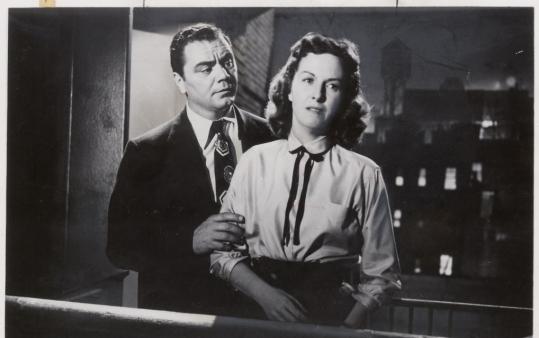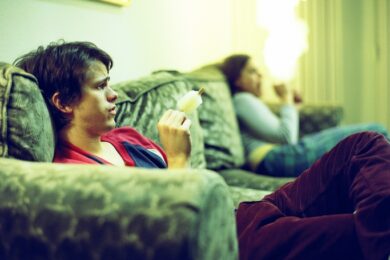Today, the American independent film scene is being overrun by a style of film which can only be described as twee. Films like Lost in Translation, Little Miss Sunshine, Juno, Me and You and Everyone We Know, and Sideways all achieve the same odd mix of cynicism and sappiness. They are dark comedies done in a light comedy way which have intelligence to spare but nary a bollock between them. They threaten to be edgy and provocative but never quite deliver on that promise.
This style (which only Wes Anderson should be allowed to do) is even getting Oscar nods despite looking as out of place among the nominees as, well, the girl from Little Miss Sunshine at a beauty pageant. Let’s face it, these are all basically Hollywood films in terms of both funding and ethos. They feature big actors, big plot arcs, snappy lines and satisfying closure, which doesn’t make them bad films, just films that lack the independent spirit.
It wasn’t always like this. Indie films used to be made of sterner stuff. They once defined themselves in opposition to the mainstream – counteracting the phoniness of Hollywood with it’s arch nemesis: authenticity. They offered drama instead of melodrama, gritty reality instead of escapism, the everyday instead of the otherworldly.
This is the same so called cult of authenticity which has defined American counter culture from Charles Bukowski and Raymond Carver to Black Flag and Fugazi. Whatever the medium, American authenticity is all about stripping away the excess of style and technique until the artist can only be judged on their commitment and personal integrity.
These indie films were audacious for being honest. They were made by real American mavericks who, if they dealt with Hollywood, did so on their own terms. For the past 30 years or so, it has been this style which has made American indie films a national cinema just as recognisable as that of France or Spain.

If you wanted to trace the history of this approach, you might start with a low budget 50s film called Marty; a film which was exceptional among Hollywood films of its day for depicting the less than glamorous existence of an average Joe and starring a less than handsome character actor named Ernest Borgnine. At the time it must have been a shocking premise. Marty’s heavy-set figure and lack of professional prospects were offered up with a bottomless pity reserved only for Channel Five documentaries about people with horrific disabilities like The Man Without A Face. In the squeaky clean dream world of the 50s, a movie about an real man not living the American Dream was tantamount to matinée horror.
Probably the most important influence on the American indie style was John Cassavetes. Cassavetes not only pioneered the slice-of-life, ensemble cast formula which is synonymous with independent film making but also the classic D.I.Y. approach. He starred in major Hollywood films like Rosemary’s Baby and used the money to finance his own projects, away from major studio influence. Early films like Shadows and Faces were extreme in their lack of traditional narrative and unpolished, documentary style camerawork. They feel so much like fly-on-the wall documentaries that it’s hard to believe the naturalistic dialogue was meticulously scripted and delivered by largely untested actors. Cassavetes’ biggest success was A Woman Under The Influence starring Peter Falk and Gena Rowlands in one of the most heroic feats of acting ever attempted. The film was nominated for two Academy Awards but won neither.

There have been other indie auteurs including Robert Altman and Richard Linklater who adopted a similar approach and maintained their integrity in the face of the establishment. Together these filmmakers form the indie pantheon of authenticity.
We might loosely define their films as those featuring everyday or highly plausible situations, naturalistic dialogue and character driven plots. Far from being mundane or boring this simple format has social, political or philosophical implications because it presents us with a fishtank microcosm of our own society. Watching these films, one often feels the voyeuristic discomfort one gets watching Big Brother, except these films have more believable characters.
But for every Opening Night, Nashville or Slacker there will inevitably be films which wear the trappings of this ‘authenticity’ like so much street cred. It’s a lot like the way American Apparel uses authenticity as a gimmick: real clothes, manufactured by everyday people for everyday people. No Hype. That’s why their models, with their lack of make-up and too much pudge, are photographed to look like the girl next door (although let’s be honest, most of us would be lucky to see girls like that in see-through lycra body suits). The hype, of course, is the lack of overt branding, despite the fact that today, tight fitting, brightly coloured, retro-style garments with a high spandex content are a more effective brand for American Apparel then that blue and red patch ever was for Tommy Hillfigger.

Several recent offerings such as Searching For A Midnight Kiss seem to similarly flaunt their ‘authenticity’: using troubled characters, inner city settings, post-rock soundtracks and conversation heavy plots. Good Dick, for example, is a recent film which, for better or worse, places itself within the tradition of American independent films. Its is about relatively mundane circumstances, casual banter, inner city life and interpersonal relationships. The story is about a lonely female porn addict who forms a strange bond with a lonely, homeless video store clerk.
But right from the beginning the seeming everydayness of the premise is shattered by the fact that director/writer/star Marianna Palka and producer/star Josh Ritter are quite attractive in a Hollywood sort of way. Let’s all remember that Ritter got his start in teen movies (but then again so did Heath Ledger and Johnny Depp). The script also reads like a play, not a film, which doesn’t match the unflinching and unflattering cinematography. In fact it feels a bit like a claustrophobic chamber drama like Long Day’s Journey In To Night or Who’s Afraid Of Virginia Woolf. The ending, while not quite a Hollywood staple, wraps up the film a bit too neatly, and Palka’s otherwise complex and compelling persona is easily explained away with one simple revelation. Why can’t crazy people just be crazy anymore?
Good Dick is a film which announces it self as provocative and edgy but remains oddly restrained. It is, at its core, a brilliant premise, with excellent performances but it is marred by a confused identity which is neither indie nor Hollywood.

So why is this the case? It feels indie has been swallowed up by Hollywood and with it so has it’s identity. Just like the term indie rock no longer means independent label but rather major label bands co-opting independent label styles and aesthetics, American independent seems to be more of a distribution strategy than a mindset. Just like Chuck Taylors, dog collars and eyeliner have lost their import for musicians, shakey cameras, conversational dialogue and mundane situations have lost their cachet for films. Now that Miramax is indistinguishable from the mainstream and nearly every major studio has an indie branch (Fox Searchlight for example) and now that overpaid Hollywood stars have their own production companies (and directorial aspirations), the line between indie and Hollywood has been erased along with the significance once attached to it.
This does mean that aspiring filmmakers have a better chance of crossing over that they did before but the films that they make are an odd hybrid: the movies are sold on their indie cred but are still constrained by the same market research and accountability to shareholders as your average Hollywood fair. This new system also priviledges those directors who aspire to direct in Hollywood over those who could couldn’t care less.
The mantle of authenticity does live on in the largely undiscovered directors who regularly show at the South by Southwest festival like Andrew Bujalski, Joe Swanberg and Frank V. Ross, mistakenly or even derisively called "mumble-core". These filmmakers as well as others are carrying on the American indie style whether you attribute that style to a moral stand against Hollywood excess or simple financial necessity. But what is important about them, and the directors who influenced them, is not their bare bones style or D.I.Y. approach but the substance of their work and their refusal to compromise themselves in order to succeed. For better or for worse that’s the indie spirit.



